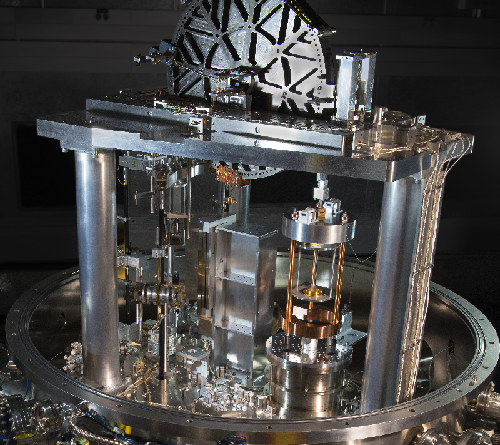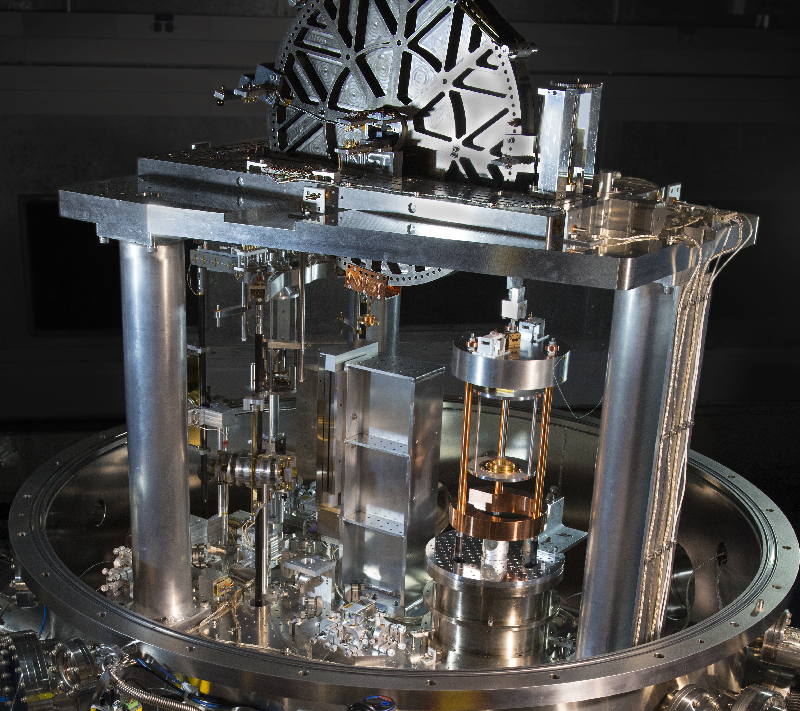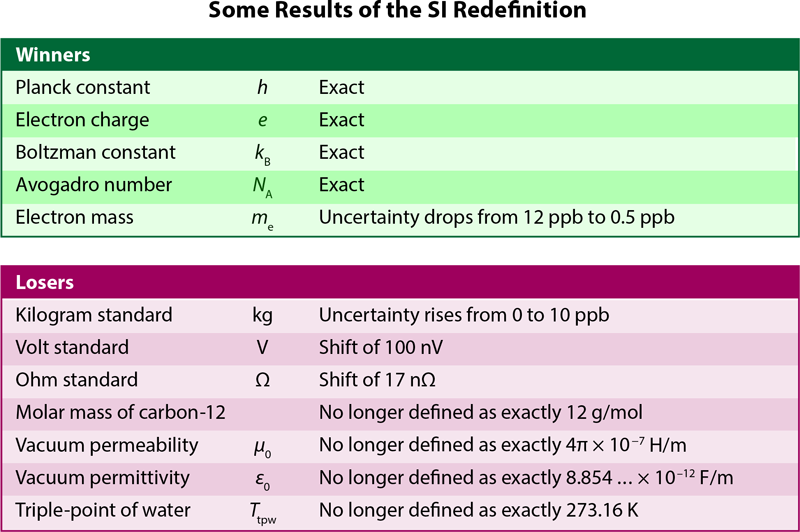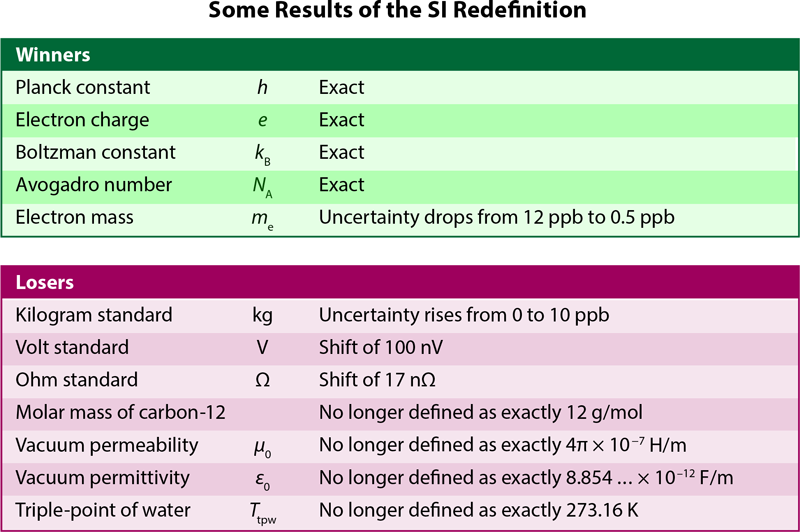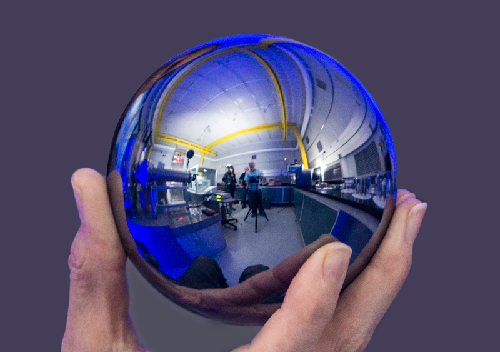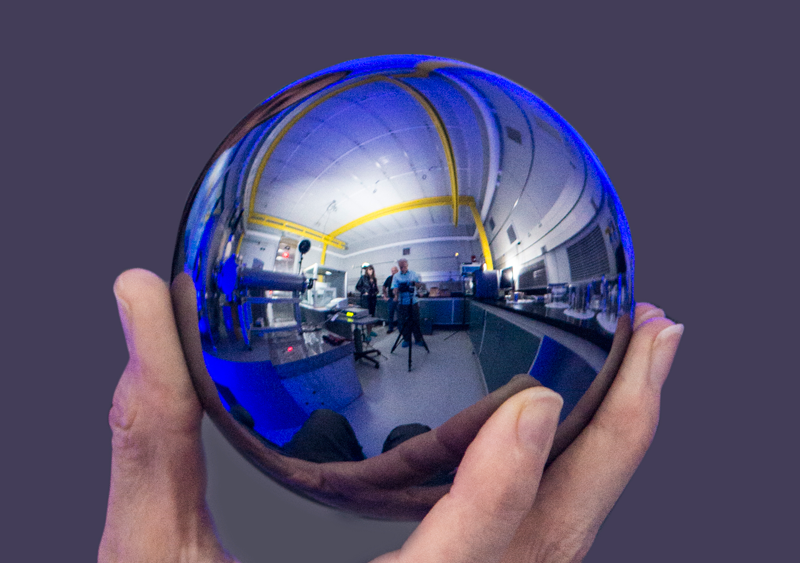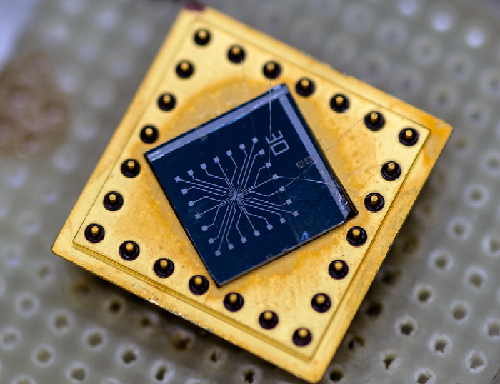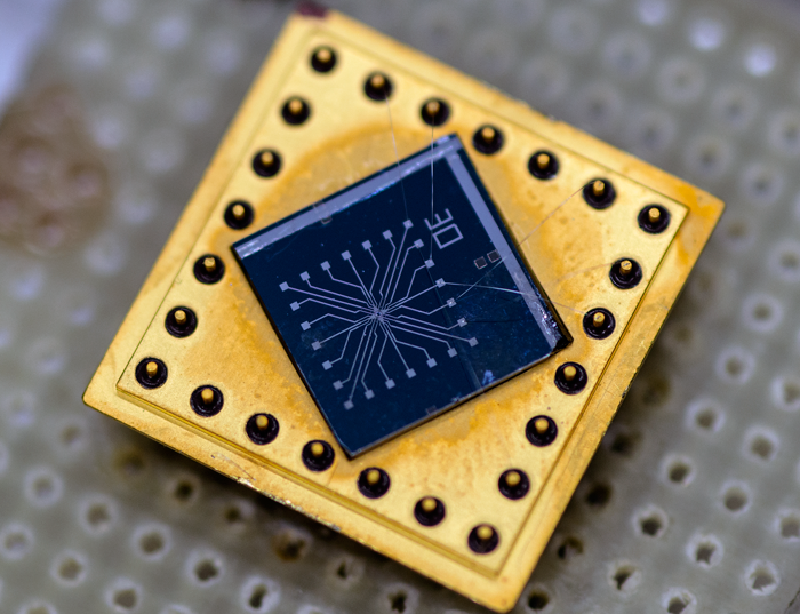Living with the New SI
The world of metrology will undergo a huge transformation on 20 May (World Metrology Day), when new definitions of the kilogram, the kelvin, the mole, and the ampere—fundamental units of the International System (SI)—go into effect. At that point, a series of physical constants such as the electron charge will no longer have error bars attached to them. But those uncertainties won’t disappear; they’ll end up in other measured quantities. This change in the system shouldn’t cause any glitches, as the error bars appear at decimal places that most scientists never reach in their experiments. But there will be some noticeable effects—certain measurements related to, for example, gravity tests and pharmaceuticals should become simpler and more precise with the new SI units.
The principle behind the SI redefinitions is to tie the units to fundamental constants. The kilogram, for example, will no longer be defined by the mass of a specific object (called an artifact by metrologists), but rather it will be related to Planck’s constant, the fundamental parameter that defines the scale of quantum mechanics. Writing this new definition on paper is not so hard, says Martin Milton, the director of the International Bureau of Weights and Measures (BIPM) just outside Paris. “The more difficult part is to realize experiments that unite the macroscopic kilogram with the quantum world of Planck.”
Over the past several decades, researchers have developed two kilogram-to-Planck experiments. The first, called the Kibble balance, works by offsetting the downward force of gravity on a chunk of metal with an upward magnetic force on a coil held in a magnetic field. Researchers tune the magnetic force by running current through the coil, and that current is measured in terms of Planck’s constant. The second experiment, conceived by the International Avogadro Project, involves fabrication of a near-perfect sphere of silicon. Using a combination of x-ray crystallography and optical interferometry, researchers can count the number of atoms in the sphere and connect its mass to Planck’s constant
In 2017, both of these methods returned values of Planck’s constant—based on the standard kilogram—having a precision of 10 parts per billion (ppb). These highly precise demonstrations have now allowed the metrology community to “turn the tables” by making Planck’s constant the defined quantity rather than the kilogram. As a result, the kilogram inherits the uncertainty that previously appeared in the Planck measurement. “Uncertainty is like a bubble under a carpet,” says physicist Stephan Schlamminger from the National Institute of Standards and Technology (NIST) in Maryland. “You can push it down in one place, but it will pop up somewhere else.”
Does that mean all weight measurements will have to be redone on 21 May? No, says Schlamminger. Most mass-measuring devices are not nearly precise enough to notice a change at the 10 ppb level. “It’s as if you bought something from me for a million dollars,” Schlamminger explains. “Would you care if I cheat you for a few pennies?” The one mass that gets a raw deal is the International Prototype Kilogram kept at BIPM (see 16 November 2018 Feature). It goes from being the definition of the kilogram (with zero uncertainty) to just a piece of metal whose mass is uncertain at the level of 10 micrograms. A modest price to pay for an SI that is “simpler and more beautiful,” says Schlamminger.
Other standards, like those for the volt and the ohm, will experience a small shift in their values because of the new definition of the ampere. NIST physicist Dave Newell says such changes will be obvious at the two dozen laboratories in the US that provide primary calibration services for electrical standards. These standards calibrate instruments that, in turn, calibrate others. Further down this chain, the uncertainties grow, and the effects of the SI redefinition will become imperceptible. “Most researchers don’t need eight digits of precision,” Newell says.
The place where the new SI could have a more visible impact is the measuring of small forces. “Accurate calibration for small forces has been a problem for a long time,” says NIST chemist Gordie Shaw. Certain gravity tests, for example, involve measuring a force as small as the weight of a milligram of mass. Under the current system, a milligram calibration standard requires starting with a kilogram and effectively subdividing it through multiple comparisons with smaller weights. “Each time you subdivide a mass, you increase the uncertainty of the measurement,” Shaw says. Going from a kilogram to a milligram, the uncertainty goes from around 10 parts per billion to 100 parts per million—a factor of 10,000 increase.
With the new SI, one could avoid this compounding uncertainty by directly building a device that measures at the level that you need. NIST researchers are currently developing a table-top Kibble balance that would measure at the 10-g level. These commercial balances would cost around $50,000, compared with NIST’s multi-million-dollar, kilogram-level Kibble balance. At even smaller masses, another option is the electrostatic force balance, which is similar in concept to a Kibble balance but uses electric forces from capacitors, rather than magnetic forces from coils of wire.
One field that might benefit from a small-mass balance is the pharmaceutical industry, where—in a future era of so-called personalized medicine—precise doses at the milligram level could be doled out for specific patients based on their DNA profiles. An electrostatic or Kibble balance could also be turned horizontally to measure forces other than weight, Schlamminger says. For example, researchers could measure the force exerted by a laser on a mirror attached to an electrostatic device. This measurement could become a more direct way to calibrate laser power for high-precision experiments like the Laser Interferometer Gravitational-Wave Observatory (LIGO).
“The advantage of the new SI is that the door will be open for people to invent new ways to implement these unit definitions,” Milton says. “This was not the case before.” By moving away from artifacts, laboratories can build their own in-house devices that “hook up directly to the fundamental constants,” Newell says. Eventually one wouldn’t need to go to NIST or other facilities for calibration services, he says. “We are putting ourselves out of business.”
The coming metrology revolution will likely change the way scientists interact with their measuring devices. Before, when the units were defined with artifacts, the goal was stasis. “With an artifact, you are afraid to damage it, so you don’t want to use it,” Schlamminger says. By contrast, a machine like the Kibble balance encourages its use. “The more you use it, the better you understand it,” he says. And unlike an artifact, a machine has room for improvement. “You can make it better,” says Schlamminger.
–Michael Schirber
Michael Schirber is a Corresponding Editor for Physics based in Lyon, France.



